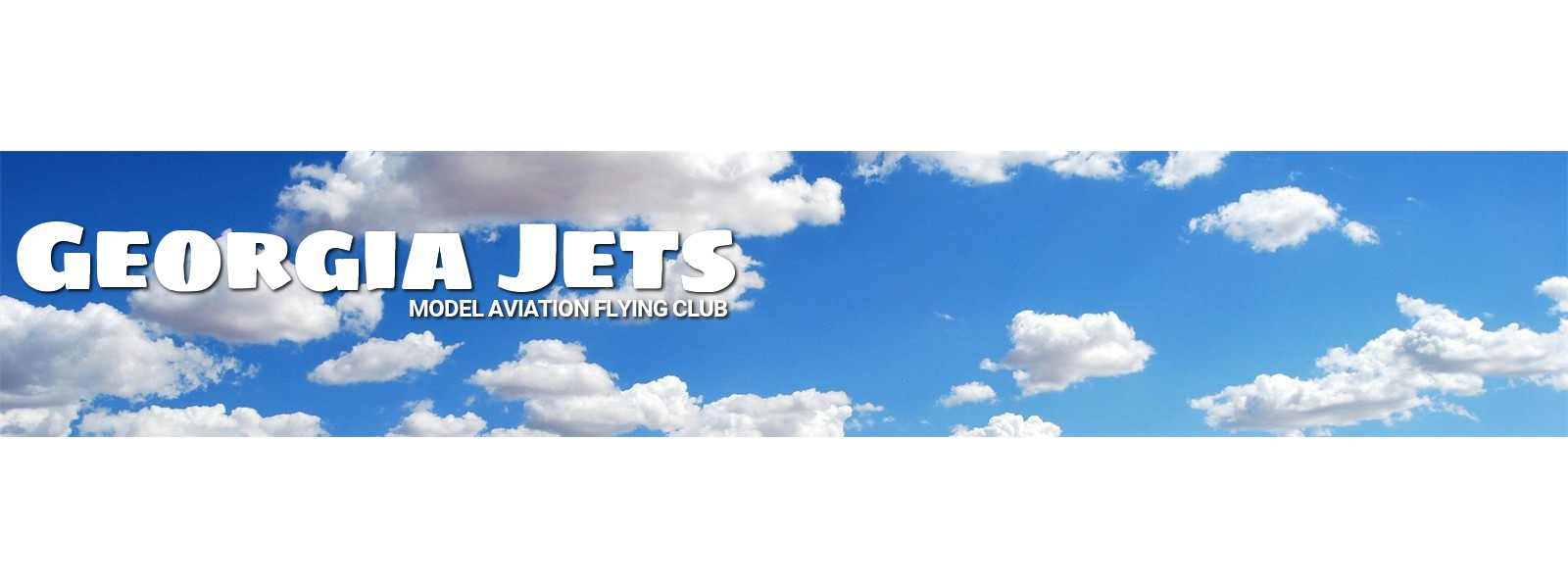Georgia Jets Flying Rules & Regulations
Enforcement of Rules and Regulations
Members failing to comply with these rules and regulations are subject to revocation of their field privileges as provided by the current bylaws.
Club Officers and the Safety Officer are given authority to ground any pilot for violations of the AMA safety code or the additional rules posted at the flying site.
1. There shall be no flying before 8:00 A.M. Monday through Saturday and before 9:00 A.M. on Sunday at Georgia Jets field with any piston or turbine powered plane. This restriction does not apply to electric powered or glider type aircraft. In addition, the property will be closed and vacated every day from sundown until 10:00 A.M. during deer hunting "firearms" season. This rule can be waived at the Board's discretion for special events.
2. Turbine operators are required to have at least one other person capable of spotting and firefighting duties present during turbine flights.
3. No engines may be started in the pavilion. Extended engine testing or tuning sh all be done on the pads away from the pavilion. Turbines shall use blast deflectors.
4. Fire fighting equipment must be positioned and available for immediate use when turbine - powered aircraft are operating at the field.
a. CO2 fire extinguishers must be available within the pit area at all times during turbine operation.
5. All aircraft should be equipped with an overflow tank.
a. All aircraft not equipped with an overflow tank must be refueled so as not to spill fuel on the grass.
b. There will be no smoking in the immediate vicinity of refueling aircraft.
6. All flying is to be from designated flight stations with the following exceptions:
a. Emergencies
b. By prior agreement with other present members while operating aircraft and not intending to use designated flight stations. ( i.e. sailplanes, helicopters, pylon).
7. All flying shall be in a race track pattern when multiple airplanes are airborne. The direction of the pattern should be established and agreed upon based on the prevailing wind conditions such that the closest part of the pattern, as well as takeoffs and landings, are up wind.
8. No flying is allowed over the pit area, spectators or parking lot at any time.
9. Landing aircraft have right-of-way over aircraft taking-off.
a. All dead stick landing, auto rotations, and touch-and-goes shall be announced so as to ensure right-of-way.
b. Takeoff and landing is not allowed while anyone is on the runway.
10. Aircraft may not be flown pointed directly at the pilot stations or pit area.
11. Low passes must be kept no closer than the north edge of the asphalt runway.
12. Pilots will coordinate amongst themselves such that aircraft of significantly differing airspeeds are not flown simultaneously. 3 - D flight will be permitted subject to an open pattern, e.g. no aircraft in the flight pattern or by consent with other flying pilots.
13. Turbine powered jet aircraft shall have priority during flight operations. Non-turbine powered aircraft may not take off while turbine powered aircraft are flying except for ducted fan jet aircraft which may operate when turbine powered aircraft are flying due to their compatible airspeeds. Non-jet aircraft will fly only when there are no model jets that are airborne. This rule is intended to increase safety and is not meant to restrict non-turbine aircraft from flying at the Club flying site. Pilots will coordinate amongst themselves in a courteous manner to ensure that all pilots and aircraft are allowed ample opportunity to fly.
14. No more than 5 aircraft will be permitted in the air at any one time.
15. All non-turbine-powered aircraft shall be equipped with a noise canceling muffler.
a. The maximum acceptable noise level for propeller powered airplanes is 95 dB at 20 feet measured over a grass surface. This rule can be waived by request at the boards' discretion for specific limited activities and times.
b. Turbine powered aircraft are exempt from noise limitations.
|
